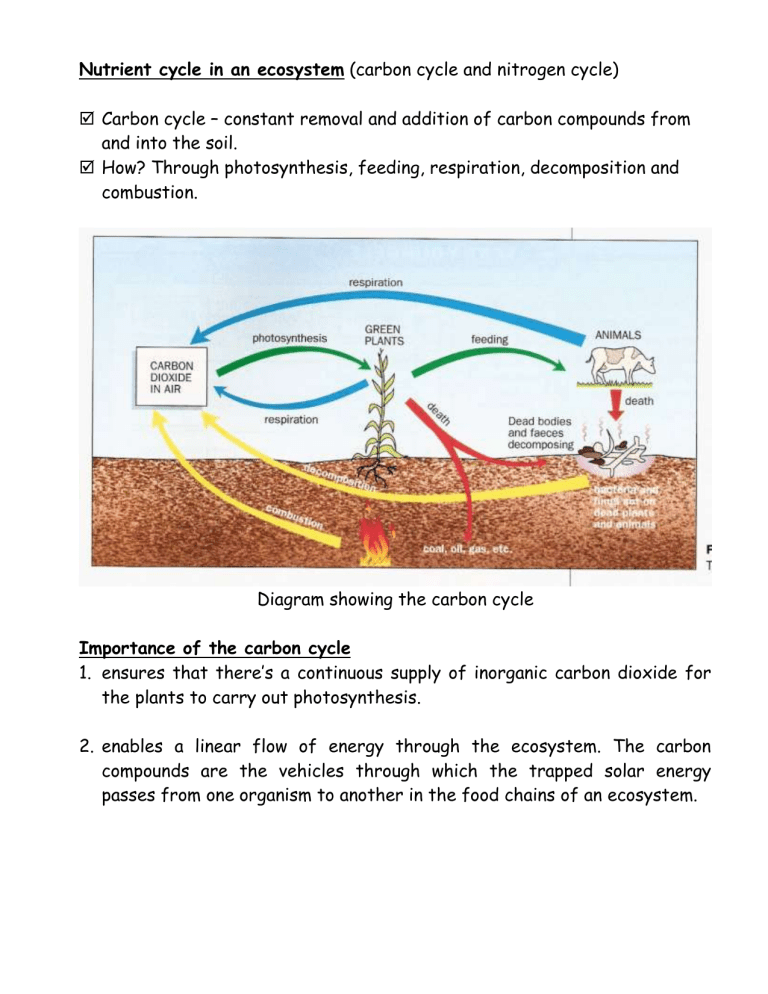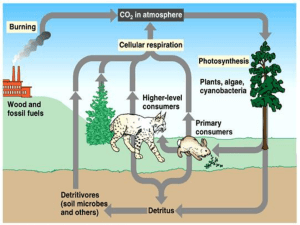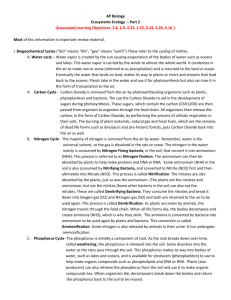
Nutrient cycle in an ecosystem (carbon cycle and nitrogen cycle) Carbon cycle – constant removal and addition of carbon compounds from and into the soil. How? Through photosynthesis, feeding, respiration, decomposition and combustion. Diagram showing the carbon cycle Importance of the carbon cycle 1. ensures that there’s a continuous supply of inorganic carbon dioxide for the plants to carry out photosynthesis. 2. enables a linear flow of energy through the ecosystem. The carbon compounds are the vehicles through which the trapped solar energy passes from one organism to another in the food chains of an ecosystem. Nitrogen cycle the process in which nitrogen is constantly removed from the soil and eventually returned to it in the form of nitrates Loss of nitrogen from the soil Absorption by the roots of green plants – nitrates in the soil are absorbed by the root hair cells Loss in drainage water – can lead to eutrophication (algae bloom) Denitrification – denitrifying bacteria in the soil convert the nitrate into atmospheric nitrogen Return of Nitrogen to the soil Decay Nitrification – ammonium compounds may be formed from nitrogenous waste products excreted by animals. The ammonium compounds in the soil are first changed to nitrites by bacteria Nitrosomonas and then to nitrates by bacteria Nitrobacter . The process by which ammonium compounds are changed to nitrates is called nitrification. Nitrogen – fixing – it refers to the conversion of atmospheric nitrogen to nitrogenous compounds. This can occur in 3 ways: - By free nitrogen fixing bacteria Azotobacter - By nitrogen fixing bacteria, e.g. Rhizobium in the root nodules of leguminous plants. - By lightning and thunderstorm



